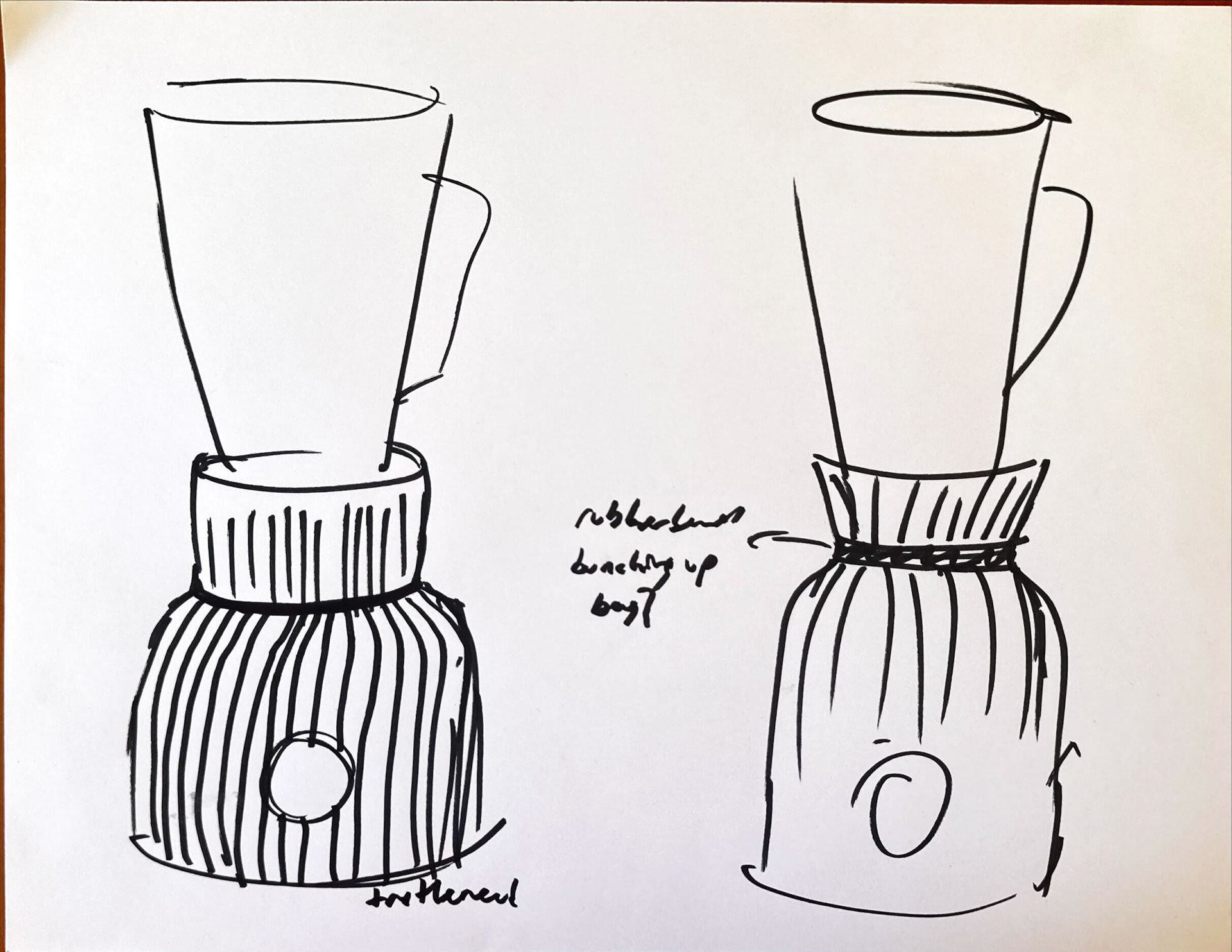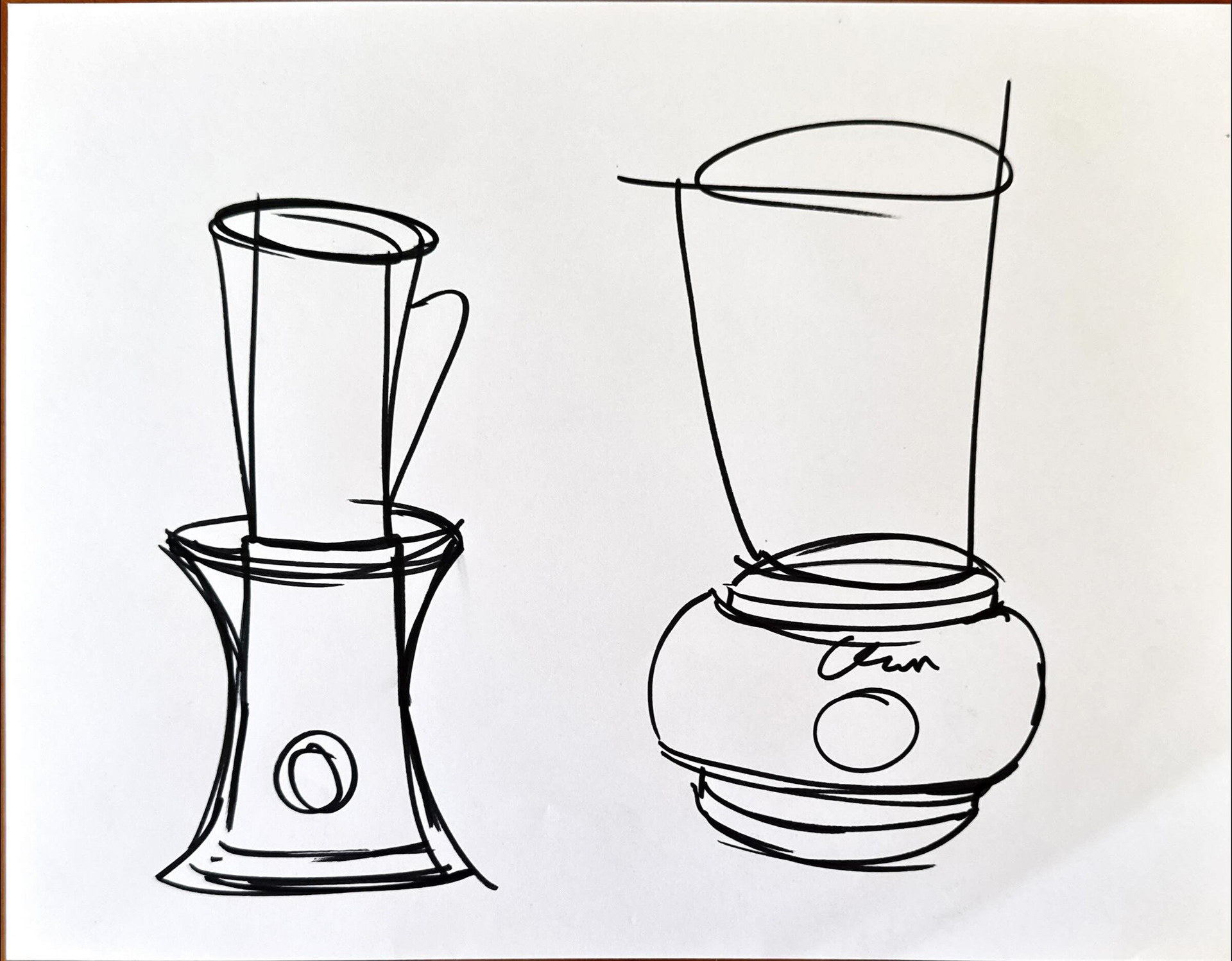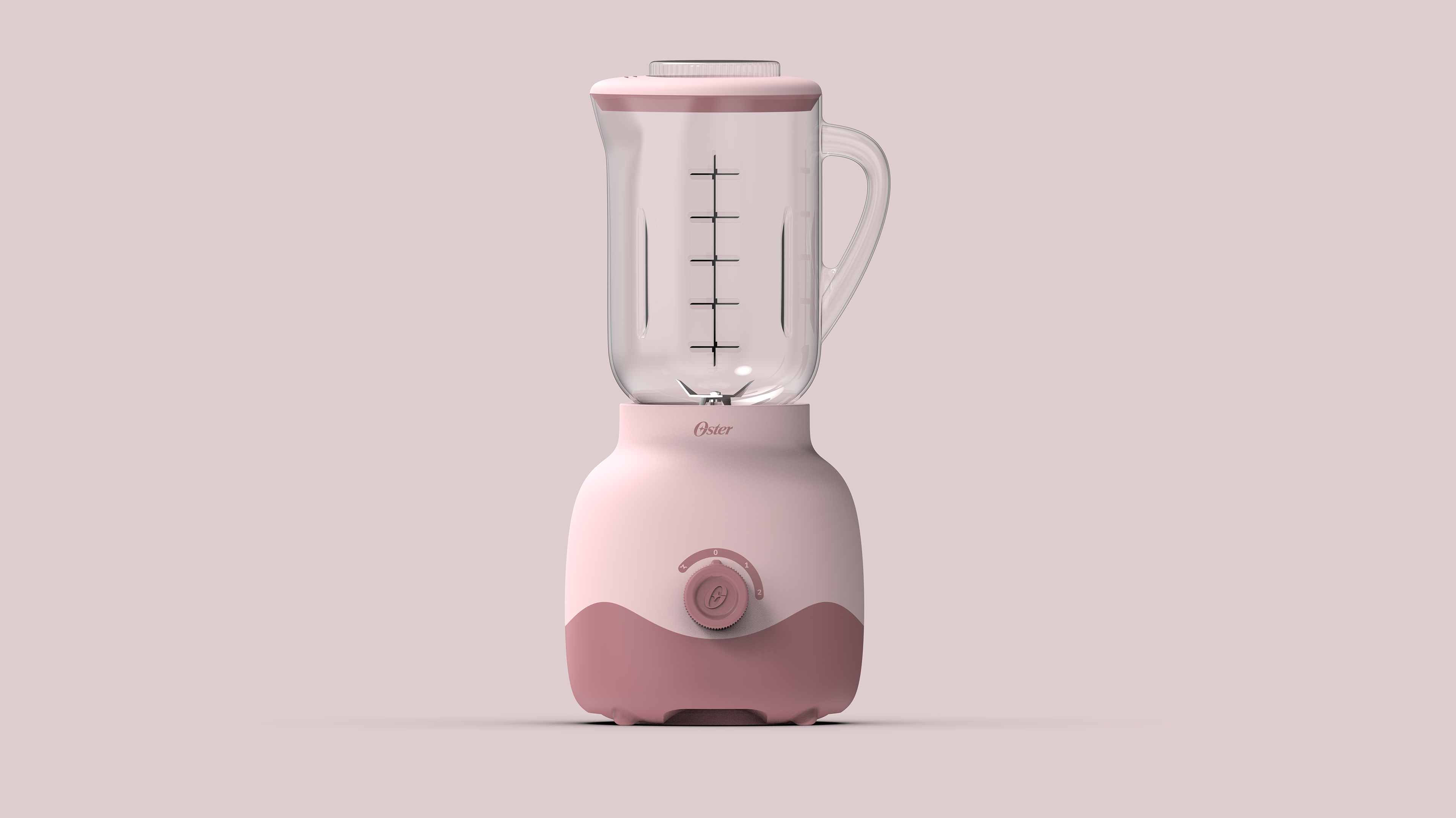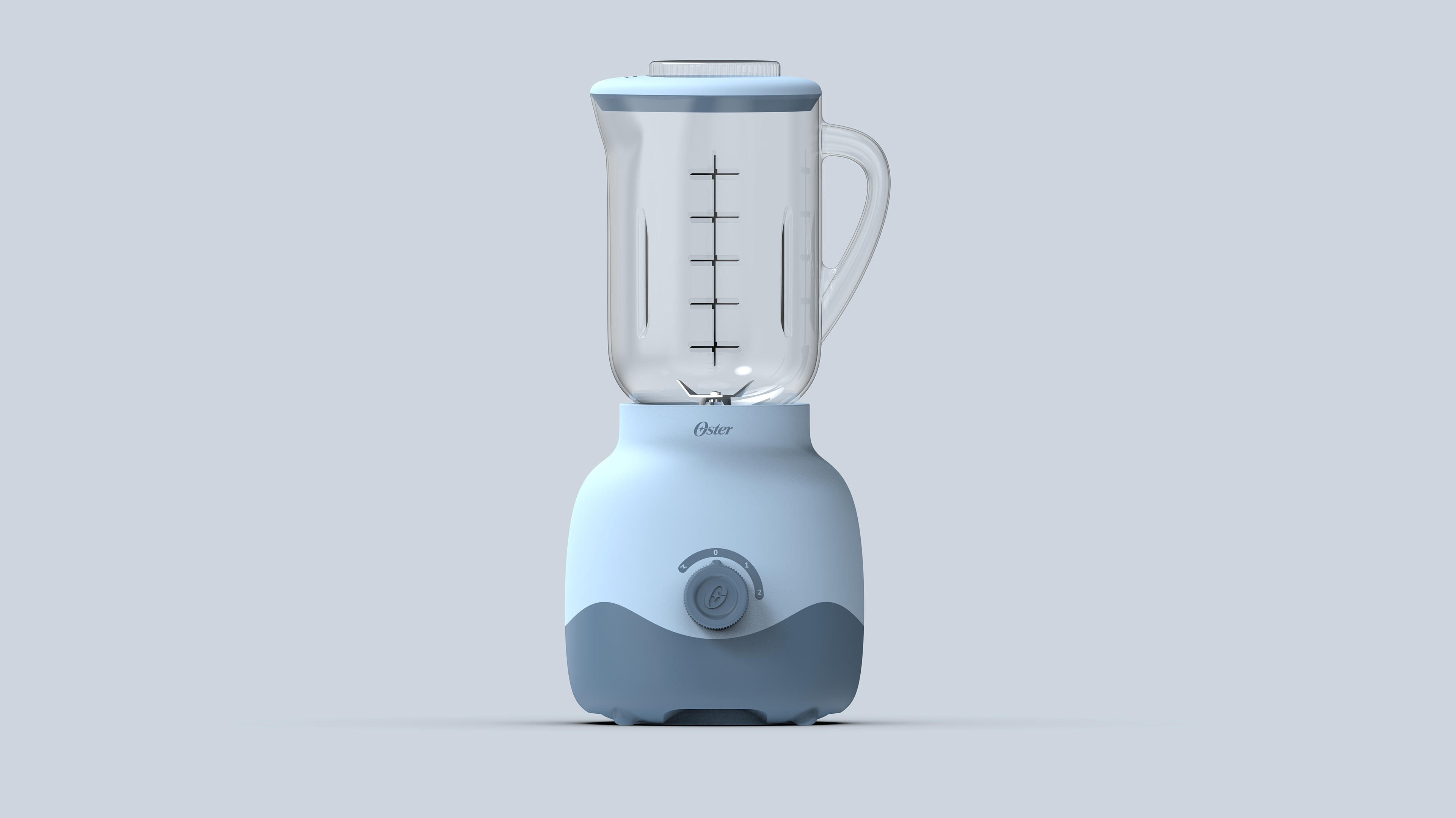This project focuses on redesigning the Oster® Classic 3-Speed Blender, with the goal of creating a more contemporary aesthetic that resonates with a younger demographic. The redesign targets a slightly higher but still affordable price point, aligning with the lower end of Oster's blender collection.
By retaining the existing mechanical and electronic components, the updated design maintains Oster's reliable functionality while introducing refined ergonomics and an enhanced visual appeal. The final concept aims to embody a fresh, modern look and feel, making it an attractive option for younger users seeking a blend of functionality and style.
To inform the redesign process, an Oster® Classic 3-Speed Blender was acquired as a reference. The blender was disassembled to closely examine its internal components and casing. Measurements of hard points were taken, including the attachment points, size and positioning of the electric motor, and other mechanical components. These hard points were documented to ensure that any new design concepts would accommodate the existing mechanical and electronic components. This provided the foundational dimensions and constraints necessary to innovate on the blender’s form and ergonomics while preserving its core functionality.




















After defining the constraints through disassembly and measurement, we moved into an ideation phase, beginning with an extensive round of concept sketches. This phase aimed to explore a broad spectrum of design possibilities. We generated a wide array of quick sketches, experimenting with forms, textures, and surface treatments that could provide a fresh and appealing visual language to the blender redesign.
From these initial sketches, the team identified three divergent aesthetic directions to explore further, each with a unique approach to balancing form, function, and cost considerations:
The first aesthetic direction focuses on a playful aesthetic with soft curves and colorful accents. This style is ideal for younger users who enjoy color and personality in their kitchen appliances, with bright, eye-catching options that add a pop of character.


The refined two and three dimensional sketches for the first divergent aesthetic explored a rounded base and softly contoured volume, emphasizing approachability and ease of use. The rounded base lends the blender a sturdy, grounded feel, while the smooth, curving lines evoke a sense of friendliness and accessibility. These sketches focused on balancing form and function, ensuring that the blender’s playful appeal doesn’t detract from its performance.
The second divergent aesthetic embraces a simple modernist design that emphasizes essential form and function, with minimal ornamentation or superfluous details. This aesthetic is ideal for users drawn to a refined, modern look and who value simplicity, elegance, and high usability in their kitchen appliances.


The refined two and three dimensional sketches for the second divergent aesthetic rely on clean lines and unembellished surfaces to create a timeless look that integrates well with contemporary kitchens. The form is simplified to its core elements, giving the blender a simple yet monolithic presence on the countertop while exploring the concepts of of weight and gravity through the use of truncated forms.
The third divergent aesthetic centers on clean lines and subtle textures to create a sense of warmth and approachability. This design approach focuses on simplicity, with a streamlined form and soft, neutral tones that seamlessly blend into Scandinavian Modernist kitchens.


The refined two and three dimensional sketches explore the idea of concealing parts of a form with a shroud. Texture becomes a key feature in this aesthetic as the textured finish on the blender body is contrasted by the smooth shroud, giving the design depth and visual interest.
With the playful contemporary aesthetic selected based on the appeal for a young target audience and the manufacturing costs, the team proceeded to create a foam model to represent the design direction in a tangible form. This foam model captured the rounded base and curvaceous neck that concealed the points that secured the blending container, and allowed us to evaluate the design and the visual appeal in the 3D space.
Building on the foam model, we developed CAD models to refine the design further. These digital models captured the rounded base and smooth contours in greater detail, while allowing us to observe the conversation between the blender base and multiple variations of the control knobs, experimenting with size, shape, and texture to enhance both functionality and visual appeal. These CAD models also featured a number of different color options based on the mood board.


For the final, the design was altered to bring it more in line with Oster's existing products. Other modifications to the design included the introduction of design features that optimized the design for ease of manufacturing and allowed the design to house the blender mechanism.


The final design features a control knob that built on the information learned from the previous iterations. The final control knob has a 1.5" diameter and features a tightly ribbed surface that provides increased grip. The O of the Oster logo was also featured in the center of the control knob, proudly displaying the brand while referencing wax seals.







